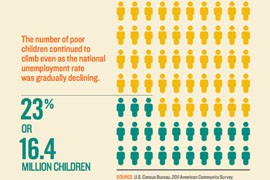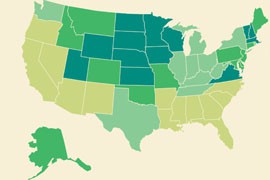By William Boardman, Reader Supported News
26 June 13
 ew
evidence contradicts the U.S. government's official story and supports
the conclusion that an American 747 jet passenger liner was brought down
by an explosion outside the airplane, likely a missile, which
caused fuel tanks to explode destroying the aircraft, according to a
group that includes credible professionals in aviation, investigation,
media, and physics.
ew
evidence contradicts the U.S. government's official story and supports
the conclusion that an American 747 jet passenger liner was brought down
by an explosion outside the airplane, likely a missile, which
caused fuel tanks to explode destroying the aircraft, according to a
group that includes credible professionals in aviation, investigation,
media, and physics.
On June 19, this group formally petitioned the
National Transportation Safety Board (NTSB) to reopen its long but
inconclusive investigation of the strange mid-air explosion that brought
down TWA Flight 800 on July 17, 1996, killing everyone aboard, 230
people from 13 countries. NTSB chair Deborah Hersman declined to discuss
the petition. Board spokesperson Kelly Nantel issued a statement
indicating that the board would probably respond "within about 60 days."
The newest challenge to the long-distrusted official
story of TWA Flight 800 comes from a group led by six experienced crash
investigators, all of whom worked on the original TWA Flight 800
investigation from 1996 to 2000. The nameless group also includes a
physicist, a documentary film producer, and a CBS News producer whose
coverage of the 1996 story was suppressed by the network at the time.
Also supporting the petition to re-open the investigation are a number
of eyewitnesses to the explosions and several family members of the
victims.
Epix Film Charges Cover-up, Evidence Suppression, Witness Intimidation
The petition to the NTSB is timed to help promote, and
directly supported by, a new documentary, "TWA FLIGHT 800," that tells
the story of how, "17 years later, inside investigators finally break
their silence." The documentary premieres on July 17 on Epix, the
premium cable channel started in 2009 by Viacom, Metro-Goldwyn Mayer,
and Lions Gate Entertainment.
Documentary co-producer Tom Stalcup is a physicist and
co-founded the Flight 800 Independent Researchers Organization in 1999
(www.flight800.org) to assure the integrity of the NSTB crash
investigation, based on the belief that "the FBI unlawfully denied the
National Transportation Safety Board access to forensic results and
eyewitness interview documents" and continues to do so.
Focusing on whether TWA Flight 800 was brought down by
an internal (i.e., gas tank malfunction or bomb) or external (i.e.,
missile) explosion, physicist Stalcup told Democracy NOW!:
The most significant piece of evidence that we have analyzed, that the NTSB has not analyzed,
is the initial detonation that caused the crash. This was recorded by
multiple FAA radar sites. And it was consistent [with] and corroborates
the eyewitness reports. The eyewitnesses reported something going up,
heading out down towards that airplane, a long distance, colliding with
it in a perpendicular fashion, detonating near or at the aircraft….
And, yes, in fact, the radar evidence— the radar sites along
Long Island picked up that exact event – supersonic debris exiting the
right side of the— right side of the aircraft, consistent with the
trajectory of that object.
Almost Everyone's First Thought in July 1996 Was Possible Terrorism
From the start, investigators and witnesses alike
suspected the explosion was a terrorist attack, by missile or a bomb
aboard the plane. As the CIA summed it up in 2008, "Investigators from
the Federal Bureau of Investigation (FBI) and National Transportation
Safety Board (NTSB) almost immediately focused on three possible causes:
a bomb, a missile, or a mechanical failure."
Because of these suspicions, the FBI took the lead in
the investigation, assisted by the CIA, operating on the assumption that
it was a criminal investigation. Officially, the FBI came to categorize
its investigation as "Re: UNKNOWN SUBJECT(S); EXPLOSION OF TWA FLIGHT
#800; JULY 17, 1996; ACTS OF TERRORISM – INTERNATIONAL TERRORISTS –
EXPLOSIVE AND INCENDIARY DEVICES."
The NTSB, an independent federal agency established by
Congress to investigate every civil aviation accident in the U.S.,
found itself in the unusual position of having to defer to the FBI. The
FBI/NTSB working relationship quickly deteriorated, becoming less a
collaboration than a culture clash. This failure of cooperation in 1996
contributed directly to widespread skepticism about official narratives,
including the present challenge to the reliability of the
investigation.
After more than a year, the FBI decided that there
were no terrorists involved in bringing down TWA Flight 800. In a
nationally televised news conference on November 18, 1997, the agency
announced it was suspending its investigation. That news conference
featured a CIA-produced animation of the end of Flight 800, "explaining"
what the witnesses had seen, whether they thought they'd seen it or
not.
You Didn't See What You Saw, You Saw What the CIA Says You Saw
Titled "What Did the Eyewitnesses See?," the CIA
animation begins with a quick summary of the takeoff, explosion, and
crash "into the Atlantic Ocean, nine miles off the coast of Long
Island." Dozens of witnesses saw what looked to them like a missile.
"Was it a missile? Did foreign terrorists destroy the aircraft?" the CIA
narrator asks ominously. "CIA weapons analysts looked into this
possibility."
"The CIA's conclusion: the eyewitnesses did not see a
missile," the narrator states. He goes on to describe what different
witnesses really saw, according to agency experts. [Excerpts of this
animation are on YouTube, "TWA 800: CIA animation: 'What did the
witnesses see?'"] The narrator finally concludes, falsely, "To date, there is no evidence that anyone saw a missile shoot down TWA Flight 800." [Emphasis in the original.]
What makes the narrator's statement false is the
evidence he himself had just acknowledged – the accounts of witnesses.
Those accounts, and the CIA's analysis of them, are all evidence, none
of which has been tested in court or any other adversarial proceeding.
There were at least 736 witnesses to at least part of the event and 258
of those witnesses saw something broadly consistent with a missile; of
these, 38 described seeing something that closely resembled a missile
rising from the ocean and looping down on the plane.
What If the Only Officially Sanctioned Conclusion Can't Be Proved?
With the FBI and CIA determining that there was no
missile and no bomb, the last remaining possibility on the
investigators' list was a mechanical failure of some sort, for which
there was no immediately obvious evidence. Although the FBI slowly
turned over much of its evidence to the NTSB, the air safety board still
took more than four years to issue its report on TWA Flight 800. Even
though that was one of the longest investigations the NSTB ever
conducted, at a cost of about $40 million, it still could not reach a
definitive conclusion.
Regarding the mid-air explosion that killed 230 people
on TWA Flight 800, the NTSB concluded: "The source of ignition energy
for the explosion could not be determined with certainty…."
Despite years of unofficial challenges to the NTSB's
final report on August 23, 2000, the safety board has not improved on
its inconclusive conclusion. Officially, the board never closes an
investigation, but the TWA Flight 800 investigation has apparently been
inactive for 13 years. The 425-page final report is on the NTSB.gov web
site. More than 17,000 supporting documents are available by request.
Almost Nobody Talks About the Navy's Role in the TWA 800 Crash
On July 17, 1996, TWA Flight 800 was flying over an
area of the Atlantic Ocean where the U.S. Navy was conducting a
live-fire exercise and had closed part of the airspace to commercial
traffic, according to Kelly O'Meara, who was then a congressional aide
to N.Y. Republican Rep. Michael Forbes.
Among the naval vessels taking part in the exercise
were a number of surface ships and three submarines – USS Trepang, USS
Wyoming, and USS Albuquerque. In the immediate aftermath of the crash,
the nearest Navy surface ship did not attempt any rescue operation, but
steamed rapidly away from the crash site. For the next two days, Navy
divers worked the crash site while keeping others, including NTSB
divers, from joining recovery operations.
According to Jack Cashill of WND (formerly World Net
Daily), an anonymous crew member of the USS Albuquerque, whom he calls
Mack, said he had loaded secret, "experimental missiles" on his
submarine for that exercise. After TWA Flight 800 exploded, Mack told
his wife that he hoped it had been a terrorist attack, since the most
likely alternative seemed to be a Navy accident.
Cashill and James Sanders co-wrote the 2003 book,
"First Strike: TWA Flight 800 and the Attack on America," in which they
argue that the Clinton White House orchestrated the multi-agency
cover-up in order to protect his 1996 re-election. The authors conclude
that "TWA Flight 800 was brought down by a Navy missile, whose intended
target was a terrorist plane on a collision course with the passenger
aircraft," according to Publishers Weekly.
Despite Conspiracy Theories, Legitimate Questions Remains Unanswered
The terrorist kamikaze plane is hardly the only
conspiracy theory tied to TWA Flight 800, but the makers of the new Epix
documentary don't theorize – they lay out what they consider to be the
critical evidence as the basis for their call for an investigation that
will address open questions.
"We are not speculating in the least," co-producer
Stalcup told the N.Y. Daily News. "Based on the evidence, we can push
[the NTSB's] conclusions aside. I think the whole world should listen."
The NSTB's inconclusive conclusion is only one issue that Stalcup and his collaborators want to see addressed. Others include:
-
What was the Navy doing out there that night? Why wasn't that investigated, or the results of any investigation made public?
- Why did the FBI fail to record a single witness interview, preferring to have agents summarize what was said in their own words?
- Why did the NSTB choose not to take testimony from any of the 700-plus witnesses to the explosion and crash?
- Why did the NTSB choose not to take testimony from the helicopter
pilot who was the closest witness to the explosion? Why did they avoid
Major Fred Meyer, then an on-duty Major in the National Guard, a
Viet-Nam helicopter veteran, who saw the takedown of TWA Flight 800 as a
missile strike? "I'm a combat vet, I know what missiles look like. And I
know what I saw," he told McClatchy's Washington Bureau.
- Why did the NTSB consider only a missile that actually hit the
plane, and not one that exploded in close proximity, even though the
latter hypothesis fits more closely with the evidence?
- Why did the NTSB consider only a missile fired by terrorists? Why
did an NTSB spokesman tell Business Insurance magazine in October 1996
that "friendly fire has never been something we've considered, or
believed?
How Welcome Would Whistleblowers Have Been in the FBI or NTSB in 1996?
The original investigators who are now breaking their
silence want to explain that silence and the intimidation that enforced
it. And they want to expose what they see as the investigation's
incompetence and wrong doing:
-
Hank Hughes was an NTSB investigator for 42 years. "TWA 800 was a
one-of-a-kind event. There was no instance in my entire career that was
like it, from the standpoint of the manipulation of the investigation,
lack of coordination, and for that matter, the willful denial of
information," he told McClatchy.
- Bob Young was an accident investigator for TWA and says the FBI manipulated the investigators and forced them to cover up facts.
- Jim Speer, who was an accident investigator for the Airline Pilots
Association, had the FBI test a piece of TWA Flight 800 for explosive
residue. When the piece tested positive, the FBI kept the piece, forced
Speer to leave, and told him that the machine often produces "false
positives." He later learned that the machine was highly reliable.
- Rocky Miller was an accident investigator for the Association of
Flight Attendants. He disputes even the inconclusive conclusion of the
NTSB report blaming the wiring: "We never found any of that. We didn't
find any evidence in the wiring on the aircraft that would have
indicated that a spark occurred inside the center wing tank that would
blow it up," he told Democracy NOW!
Media Sampling Suggests Some Caution About Believing Official Stories
Following the June 19 news conference to announce the
petition and documentary, news coverage was limited but largely neutral.
CBS This Morning gave the story almost 5 minutes featuring the CBS
reporter who was the first reporter on the scene that night, by boat.
The National Journal gave more space to the NTSB non-response response
than any substance.
Forbes magazine ran a piece by a former NTSB board
member who had approved the original report; he defended the report and
said no one even complained to him about a cover-up. CNN's The Lead gave
a forum to FBI Assistant Director James Kallstrom, who supervised the
original FBI investigation of TWA Flight 800. Kallstrom called the
petition "preposterous" and personally attacked the petitioners, but did
not address questions of substance. He was somewhat more responsive
during Fox's 12-minute report, but eventually went to ducking questions
and making personal attacks.
CNN's Anderson Cooper 360 gave the story four minutes,
during which John King pressed Hank Hughes with exaggerated claims that
Hughes said weren't his. He and two others had testified about the same
problems to a Senate committee in 1997, but their testimony "fell on
deaf ears," Hughes said. "There's no motive in this, other than we want
to get it straight. It's a matter of personal integrity for us."
When Some Questions Aren't Asked, How Is an Investigation Complete?
One of the issues the FBI and the NTSB continuously
fudge is the possibility of a missile. They consistently say they
considered whether a missile hit the plane and found no evidence of a
missile hitting the plane.
The counterclaim, which the FBI and the NTSB admit
they did not investigate, is that a missile exploded near the plane,
without hitting it.
In both scenarios, the missile sets off the gas tank explosion that destroyed the plane.
In pondering questions about the TWA Flight 800
explosion, it may help to keep this context in mind: if the Pentagon
went to great lengths to cover up the friendly fire killing of football
start Pat Tillman in Iraq, how much further might the Pentagon go before
admitting the U.S. accidentally brought down an airliner full of
civilians off Long Island?
How many decades did the Marines go before they stopped poisoning their own people at Camp Lejeune?
Sometimes the unthinkable is all too thinkable.










 ew
evidence contradicts the U.S. government's official story and supports
the conclusion that an American 747 jet passenger liner was brought down
by an explosion outside the airplane, likely a missile, which
caused fuel tanks to explode destroying the aircraft, according to a
group that includes credible professionals in aviation, investigation,
media, and physics.
ew
evidence contradicts the U.S. government's official story and supports
the conclusion that an American 747 jet passenger liner was brought down
by an explosion outside the airplane, likely a missile, which
caused fuel tanks to explode destroying the aircraft, according to a
group that includes credible professionals in aviation, investigation,
media, and physics.



